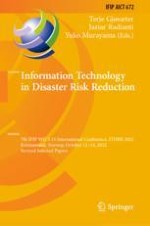This volume constitutes the refereed and revised post-conference proceedings of the 7th IFIP WG 5.15 International Conference on Information Technology in Disaster Risk Reduction, ITDRR 2022, held in Kristiansand, Norway, in October 2022.
The 23 full papers presented were carefully reviewed and selected from 33 submissions. The papers focus on various aspects and challenges of coping with disaster risk reduction. The papers are categorized in the following topical subheadings: strategic disaster risk reduction; situational awareness; telecommunications, sensors and drones; collaborative emergency management; cybersecurity and privacy; earthquake and climate forecasting; social media analytics; community resilience.
